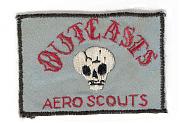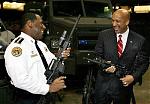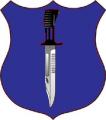My concept had a Vietnam-era mix, with tanks down at the Troop level along with either wheeled or tracked (I tend to prefer the M-113 family for UW/LIC stuff) vehicles to move a dismount element. For operations you could have a ground Troop with an attached air Troop working route security, quick reactions, and even some population security. One of the forgotten lessons of Vietnam was that cav tended to work better when it had its organic air cav along for the ride and not close-held by Division (or higher). The Vietnam-era air cav troop also had a platoon of infantry (the Blues or ARPs) that could be used as either a ground recon force or dismounts/QRF elements to support movements made by the ground Troop.














Bookmarks